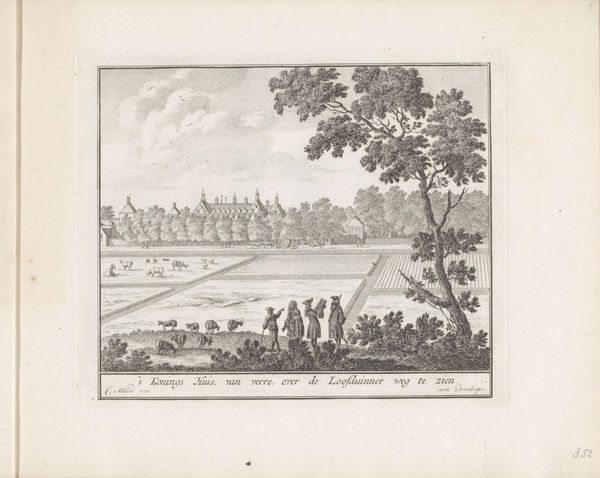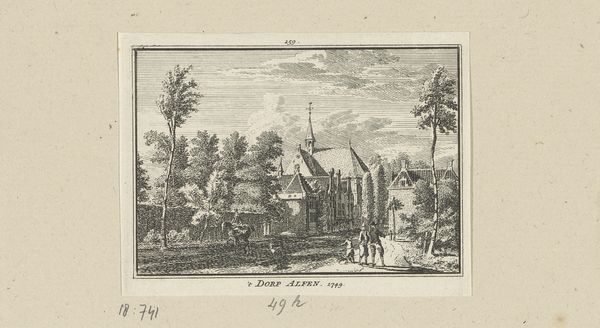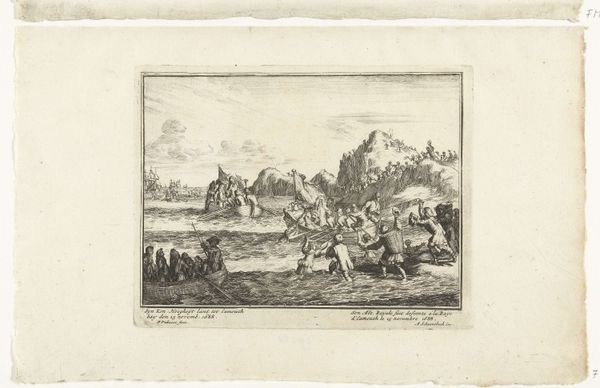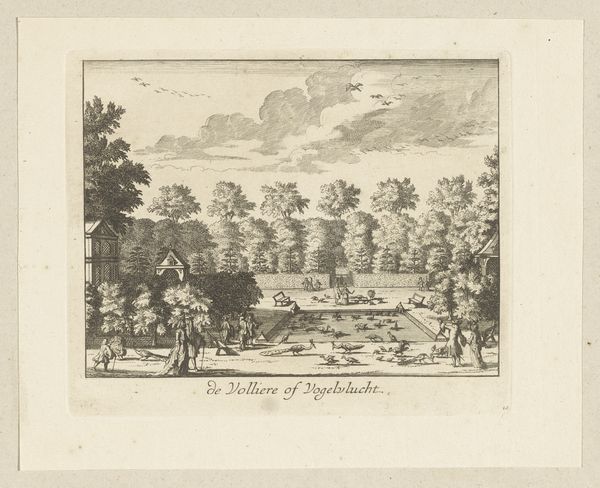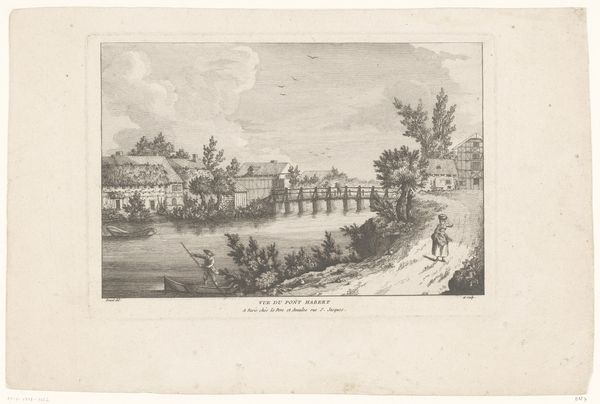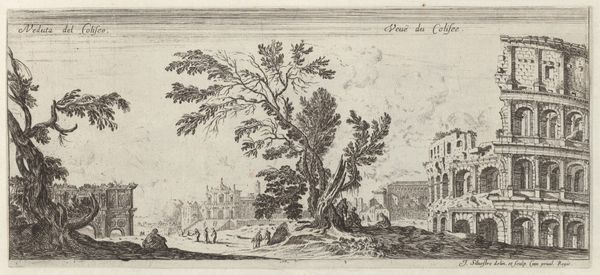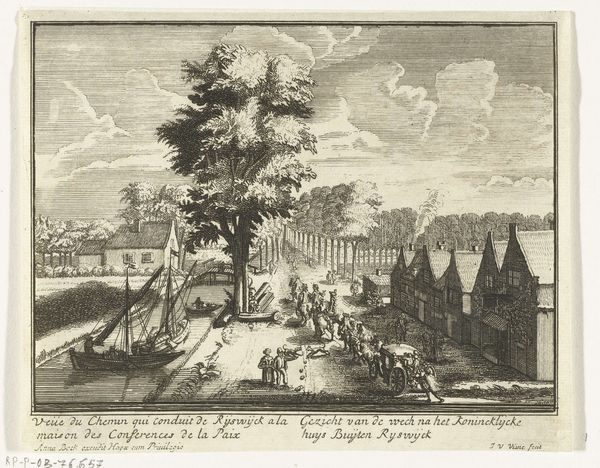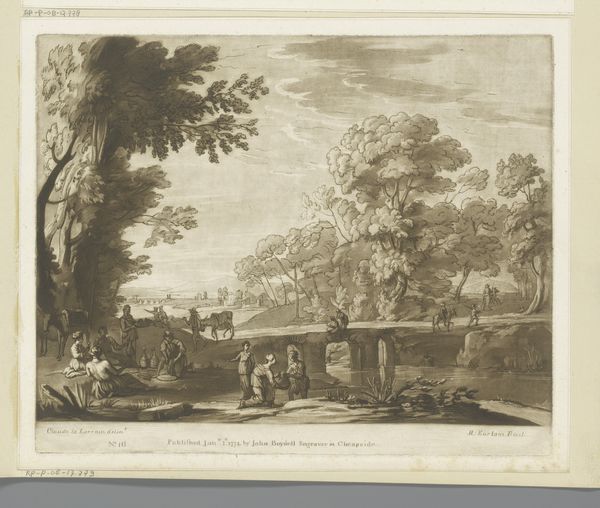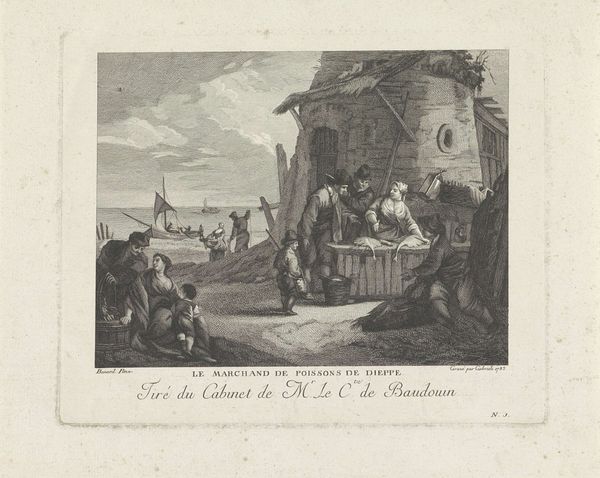
print, engraving
#
baroque
# print
#
old engraving style
#
landscape
#
cityscape
#
engraving
Dimensions: height 141 mm, width 180 mm
Copyright: Rijks Museum: Open Domain
Curator: This engraving, dating from 1696 to 1718, is entitled "Venusfontein in de tuin van Paleis Het Loo" and it's by Cornelis Danckerts II. It depicts a scene from the gardens of the Het Loo Palace and is held at the Rijksmuseum. Editor: Immediately, I notice the careful balance in the composition. The placement of the fountain, centered within the manicured landscape, creates an appealing visual symmetry. Curator: It's intriguing to consider the engraving as a manufactured object and artifact of Dutch Golden Age commerce. Think of the engraver's workshop: the division of labor, the access to copper plates, and the market that supported the production and dissemination of images like this. Editor: From a purely formal perspective, it's the line work that draws me in. The intricate details—the foliage, the figures—are rendered with impressive precision. And, in this monochromatic palette, the gradations of tone are incredibly effective. Curator: Absolutely, the work speaks to the construction of royal power. Prints like these helped to construct and circulate the image of a sophisticated court, where leisure and pleasure are tools of diplomacy, reflecting the resources, labor and political influence that made such a landscape possible. It's also fascinating to see the act of consumption and performance from a wealthy, privileged lifestyle being portrayed in this image. Editor: Indeed. Looking closely, the implied narrative also resonates. We see people strolling, pausing to admire the fountain. Their placement contributes a dynamic element that contrasts nicely with the static architecture and sculptures. How fascinating! Curator: Considering that this was a time when landscape design was intertwined with displays of wealth and power, the production and distribution of the engraving through print markets underscores the desire to circulate an image of luxury beyond the immediate grounds of the palace. Editor: Thank you for your perspective, this landscape now seems imbued with layers of wealth, privilege, production, labor, and artistry, much more than simply its initial appeal.
Comments
No comments
Be the first to comment and join the conversation on the ultimate creative platform.
